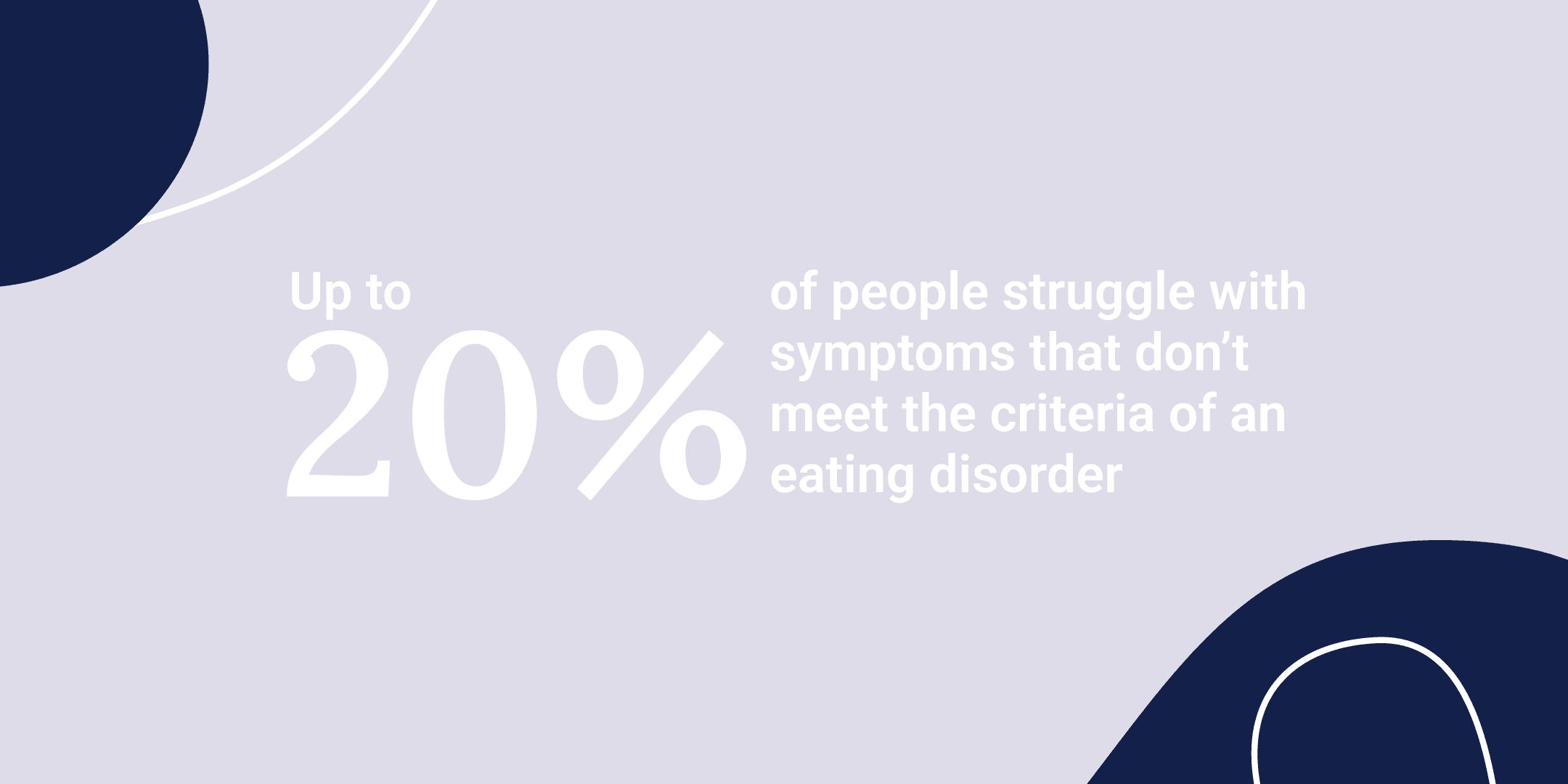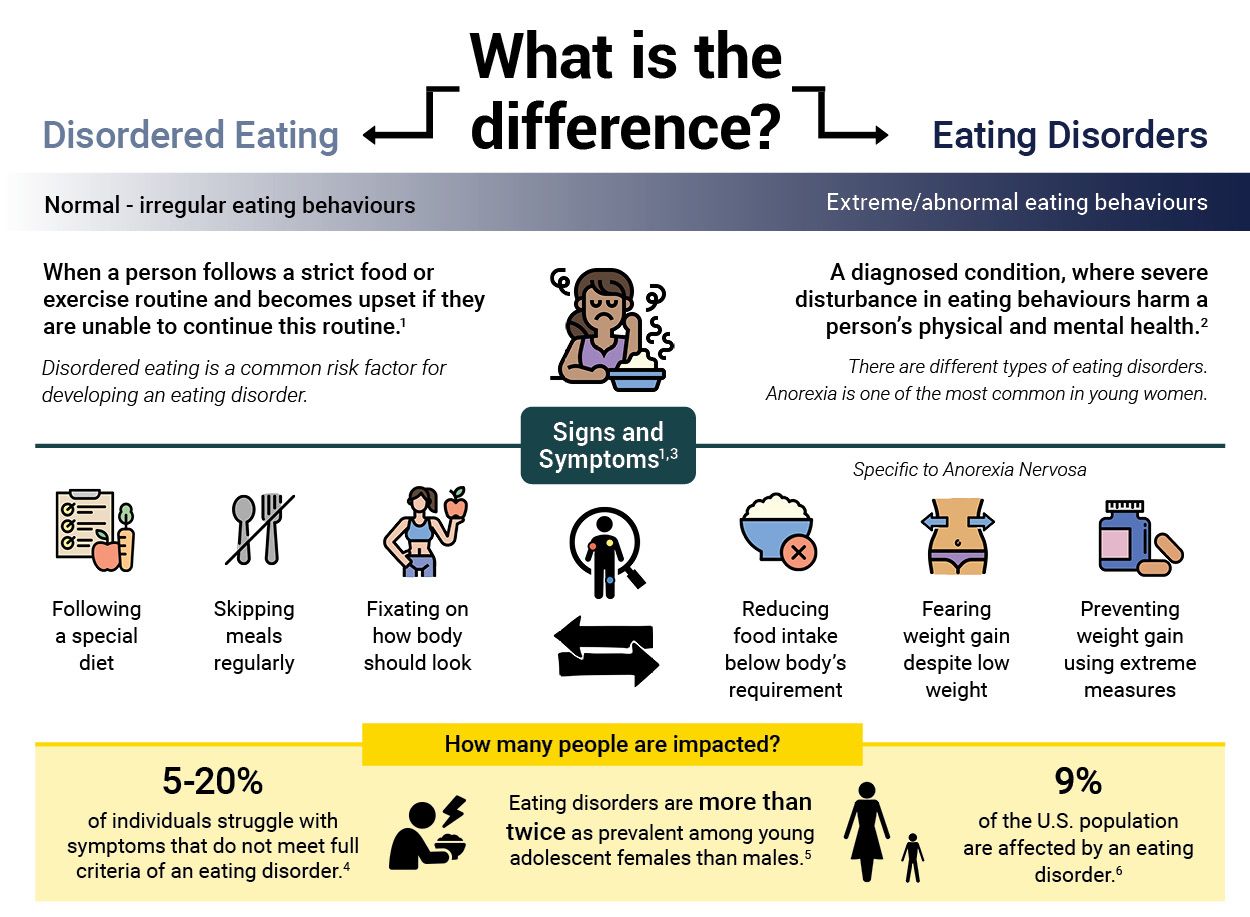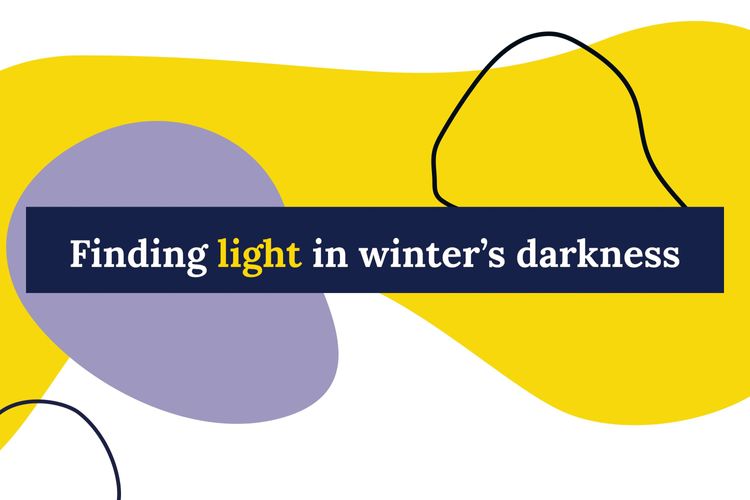

Disordered eating and eating disorders aren't the same.
An eating disorder is a clinical diagnosis. In contrast, disordered eating describes behaviors, thoughts, and emotions related to food and body image that don’t meet the criteria for eating disorders but aren't healthy habits either. In other words, disordered eating sits on a spectrum between "normal" intuitive eating and "abnormal" eating patterns that signal an eating disorder.
Both are cause for concern.
About 9% of adults in the U.S. are affected by an eating disorder in their lifetime. Up to 20% of adults have symptoms of an eating disorder but do not meet the standard definition. Furthermore, disordered eating can progress to an eating disorder, so it's important to spot it early and get help.
References:
- Laurence, E and Ross, C. (2022, September 15). Disordered Eating: Causes, Warnings Signs And How To Seek Help. Forbes Health.
- American Psychiatric Association. Eating disorders. December 2020. Available at: https://psychiatry.org/patients-families/eating-disorders
- Psycom Pro. Eating Disorders. Available at: https://pro.psycom.net/psychiatric-disorders/eating-disorders
- Smink, F.R.E., van Hoeken, D. & Hoek, H.W. Epidemiology of Eating Disorders: Incidence, Prevalence and Mortality Rates. Curr Psychiatry Rep 14, 406–414 (2012).
- National Institute of Mental Health. Eating Disorders. Available at: https://www.nimh.nih.gov/health/statistics/eating-disorders
- National Association of Anorexia Nervosa and Associated Disorders. Eating Disorder Statistics. Available at: https://anad.org/eating-disorders-statistics/
Subscribe to our newsletter
Get a weekly roundup of articles, inspiration, and brain health science in your inbox. Subscribe now.


